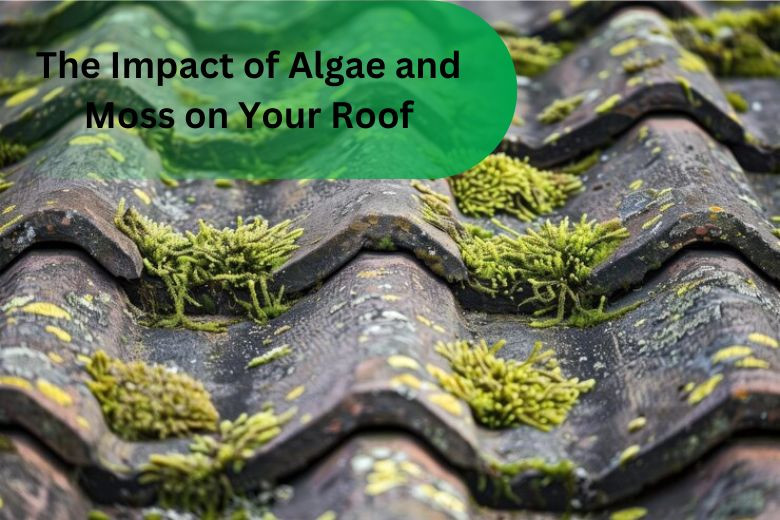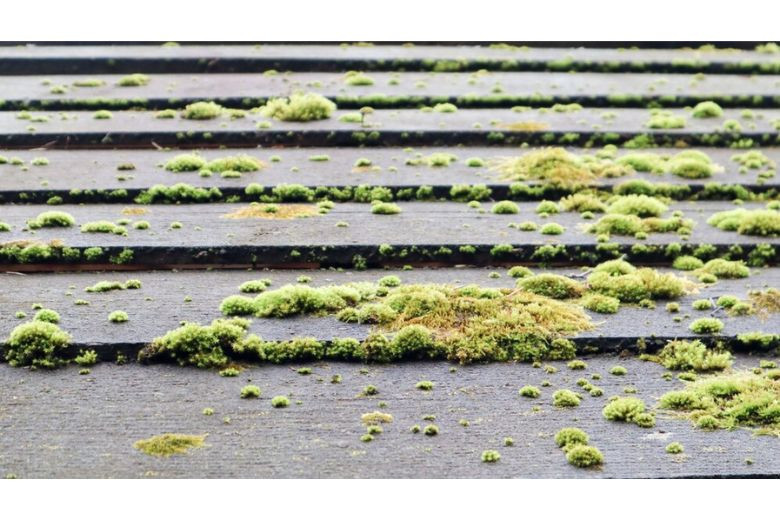The Impact of Algae and Moss on Your Roof
Posted on September 09, 2024 by Admin

Algae and moss on your roof may seem to be minor issues, but they do affect your roofing system to a great degree. Two of the very common problems not only compromise the aesthetic appeal of the house but also have long-lasting effects on the integrity of any roof. Understanding the effects of algae and moss on your roof is very important in keeping your roof healthy and increasing its life span.
Understand Algae and Moss on Your Roof
Algae and moss will grow in climates that are damp and shaded, so the areas of your roof receiving less sunlight are more at risk. Common signs of algae include dark streaks, usually green or black in color. Moss will grow in thick, green patches. If not treated, both microorganisms can cause a variety of issues.
How Algae and Moss Affect Your Roof
1. Decreased Roof Lifespan
Algae and moss will significantly cut down any roof's life. Algae use the limestone found in asphalt shingles as a means of sustenance, slowly wearing them down with time. Moss holds moisture to the roofing, resulting in rotting and decaying of the materials. This constant wear and tear cuts down on the years of life left on your roof and will require you to repair or replace your roofing more frequently.
2. Higher Maintenance Costs
Algae and moss require regular maintenance to manage and mitigate their impact. Roof cleaning to rid a roof of these growths can be an expensive procedure if it is done too often. If a person allows algae and moss to build up over some time, more serious damage can be inflicted which will then need professional help, adding to the cost of maintenance.
3. Aesthetic Issues
Algae and moss can quite easily grease up the appearance of your roof. Black streaks and green patches add on to the dirty look, making your home less attractive to any person who passes by. To any homeowner attempting to keep that curb appeal looking good, the aesthetic effect of algae and moss on your roof might be huge and could have an overall effect on your property value.
4. Reduced Energy Efficiency
Algae and moss growth can lead to less efficient energy. Algae and moss growth can be the reason behind your roof's reflectivity; in other words, it makes it more absorptive. That might result in a higher cost of cooling since your HVAC system needs to give more effort to cool down your indoor space.
5. Possible Structural Damage
Moss does hold a good deal of moisture that would rot away the roof decking and underlayment. This can, over time, seep into the other underlying structures, wreaking havoc and weakening your roofing structure. Algae, just like moss, might have less destructive effects than moss, but it will also be a big contribution to the deterioration of shingles and other kinds of roofing materials.

Controlling Algae and Moss on Your Roof
1. Regular Cleaning
Cleaning of the rooftop is very essential in preventing the growth of algae and moss. This may be made possible by the use of a roof cleaner that kills off such organisms without posing threats to your shingles. Consider professional cleaning services for effectiveness and thoroughness.
2. Algae-Resistant Shingles Installation
Other measures include the use of algae-resistant shingles at the time of reroofing. Coatings on such shingles retard or prevent the growth of algae and thus avoid future problems.
3. Improve Roof Ventilation
Improvement in the ventilation of the roof can further reduce the amount of moisture that algae and moss need to grow. Ensure good ventilation in your attic so that the roof remains dry and less friendly to these organisms.
4. Trim Overhanging Trees
Keep branches of trees and shrubs that shade your roof trimmed. This is again going to dry out the roof from additional sun exposure, further reducing the chances of algae and moss growth.
Also Read :
How to Deal with Roof Leaks During a Storm
The Role of Gutters in Roof Maintenance and Longevity
The History and Evolution of Roofing Styles
How to Choose the Right Roof for Your Climate
Faqs
-
1. Why is there algae and moss on my roof?
Algae and moss grow in damp, dark environments. Roofs in the shade or with tall trees and other vegetation have a strong tendency to support these growths. Algae typically appears as black streaks; moss as green patches. Poor roof drainage and poor ventilation that allows excessive moisture to be retained on the roof also encourages their growth.
-
2. How to Clean Algae, Moss off a Roof?
For algae and moss growth, a roof cleaner can be used on the roof. In case you're doing it yourself, apply a cleaner according to the package instructions, with great caution not to harm your kind of roofing. If the growth is heavy or the areas are tough to reach, then it is recommended to opt for a professional cleaning service for your roof. These service providers have special equipment and techniques for the safe and effective removal of algae and moss.
-
3. Will algae and moss cause problems with your roof?
Yes, algae and moss may be very problematic for your roof. Algae have been reported to feed on asphalt shingle limestone, which results in roofing deterioration. Moss provides a form of moisture barrier that eventually leads to roof rot and other types of roofing-material failure. Both reduce the life expectancy of a roof and may result in more serious repairs if left unattended.
-
4. How do I stop algae and moss from growing on my roof?
First, improve the ventilation of your roof, and keep it clean and dry. If you are putting on a new roof, consider algae-resistant shingles. Trim overhanging trees, and clean gutters so sunlight can get to the roof and promote drying. This is further enhanced by regular inspections and cleanings that help in preventing buildup.
Recent Post
- Top Plumbing Service Providers in Arizona, USA
- Top 10 Electrician Service Providers in Alabama, USA
- Top 20 Roof Repair Service Providers in Alabama, USA
- The Role of Roof Insulation in Energy Efficiency: Tips and Tricks
- Understanding Roof Damage from Wildlife and How to Prevent It
- How to Choose the Best Roofing Contractor for Emergency Repairs
- Roofing Maintenance for Historic Homes: Preserving Architectural Integrity
- The Importance of Proper Attic Ventilation for Roof Health
- How to Identify and Prevent Roof Mold and Mildew
- The Best Practices for Removing Snow from Your Roof